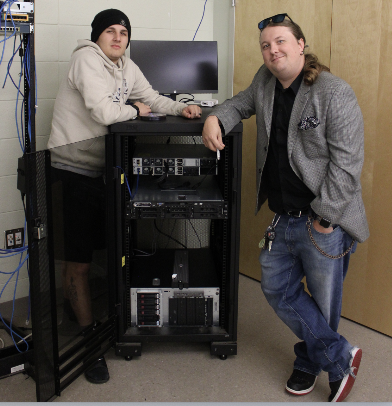Queen Elizibeth II sent her first email in 1976. One year later, in 1977, the General Post Office of the United Kingdom made the decision to discontinue telegram services. Once they became popular, most mobile phones were a luxury of the rich, being a large awkward thing in a canvas bag that could be fit into a car or other vehicle “for convenience.”
The way friends or colleagues connected with one another in the past likely seems very strange or even silly when viewed through modern lenses. Phone services no longer require buildings full of switchboards and people to operate them. Now most devices are managed by a collection of computer servers and are overseen by a handful of individuals. Those connections still need people to make them, though.
For as many advances as have been made in the last 20 years alone, two things remain a constant when it comes to connecting phones and other devices around the globe: networking and programming. Networking and the programs that silently control those networks are the backbone of modern communications, and the specially-trained service men and women who manage our communication networks keep the hearts of our conversations beating. Jones College offers its own Networking Program, along with its programming twin, to students looking to pursue further education at a four-year college or to enter the field immediately with a career or technical certificate.
Jones’ networking program offers training in many different technologies and skills such as various computer and server hardware, computer operating systems, server construction and maintenance, network administration and network design. Students will gain hands-on experience as instructors guide them through detailed exercises with many pieces of equipment and software they will face in the real world. Students are taught to utilize features of both Windows and Linux operating systems in network implementation and are given familiarity with several facets of Mac OS as well.
“What distinguishes us from the programming [side] is that we work more with the actual physical infrastructure of networks. We work more on making sure the computers anywhere can communicate with each other. We also did a little bit of general IT work, troubleshooting, making sure somebody doesn’t have a ram stick turned backwards in their computer, that kinda stuff,” said a student of the program, Kade Cochran. He continued “you can’t really know what to expect, and I like it that way. You want a certain degree of chaos because it teaches you to think more in terms of the abstract. You want to be able to think beyond the basic understanding.”
Instructors prepare their classes to think critically and problem-solve in creative new ways. The fields of computer science are constantly changing, and rapidly developing technology requires a mind that is willing to continue to constantly learn and flexible enough to reach obscure answers to questions not fully understood at times. Students are also encouraged to document their processes so that if a problem arises, it can be kept for a future solution.
“Expect some tough challenges,” said Cameron Pippen, another student of the program, “there’s definitely gonna be some tough challenges. Very rewarding challenges though. Don’t doubt yourself.”
Instructors encourage group participation for certain projects and get the entire class involved at times. “It’s very hands on and it’s very chill,” Pippin said. “There’s a lot of good chemistry from everybody and that makes it a lot of fun.”
“Student relations in our class are very tight,” said Zackary Maxwell, also a networking student. He continued, “Everyone in the program is, for the most part, like-minded individuals that share a common interest. Most of us in the networking program are huge gamers, and we share that, but even with [everyone] coming from different backgrounds [our] personalities blend very well.” Network specialists will find themselves collaborating with their peers often in professional settings, and good teambuilding skills are essential for success.
Along with steering these future experts through the process of setting up and testing network connections, from pulling cables through ceilings to programming a Wi-Fi router, JC offers the opportunity for students to participate in Cybersecurity training. “Why put a door on your house and not allow yourself to lock it,” right? Cybersecurity classes are scheduled during the summer, allowing students to complete additional certifications between regular networking courses.
Cybersecurity students are taught the fundamentals of internet safety, being made familiar with various threats to computers like viruses and malicious software. They are trained to identify and mitigate these threats and are made mindful of the constantly advancing complexity of computer technologies. Due to the sheer volume of material to be learned because of the nature of these technologies, some students feel that the eight weeks are not quite long enough to absorb everything; however, they feel they are adequately prepared to continue learning on their own.
Cochran offers a bit of what he learned during his time in both the Cybersecurity and Networking programs: “At least at first, listen more than you speak, and never be afraid to ask questions. Never be afraid to be wrong either, because when you’re wrong you can always turn it around. It’s staying wrong that makes things difficult, so be willing to make corrections.”
by Kyle Manseill

